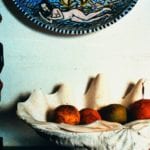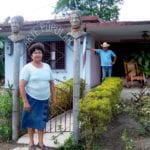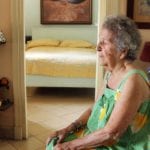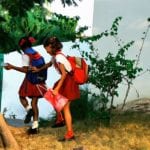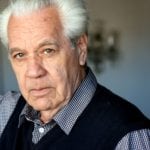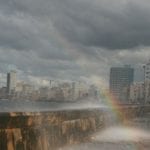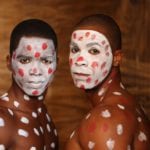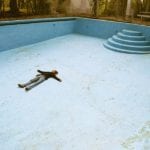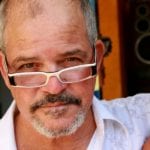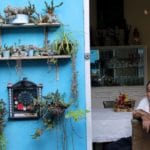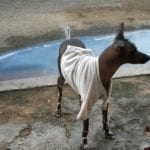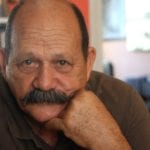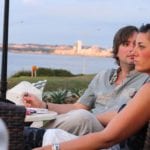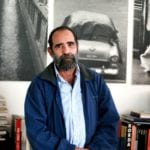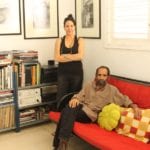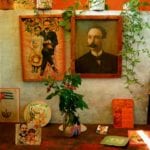March 2013
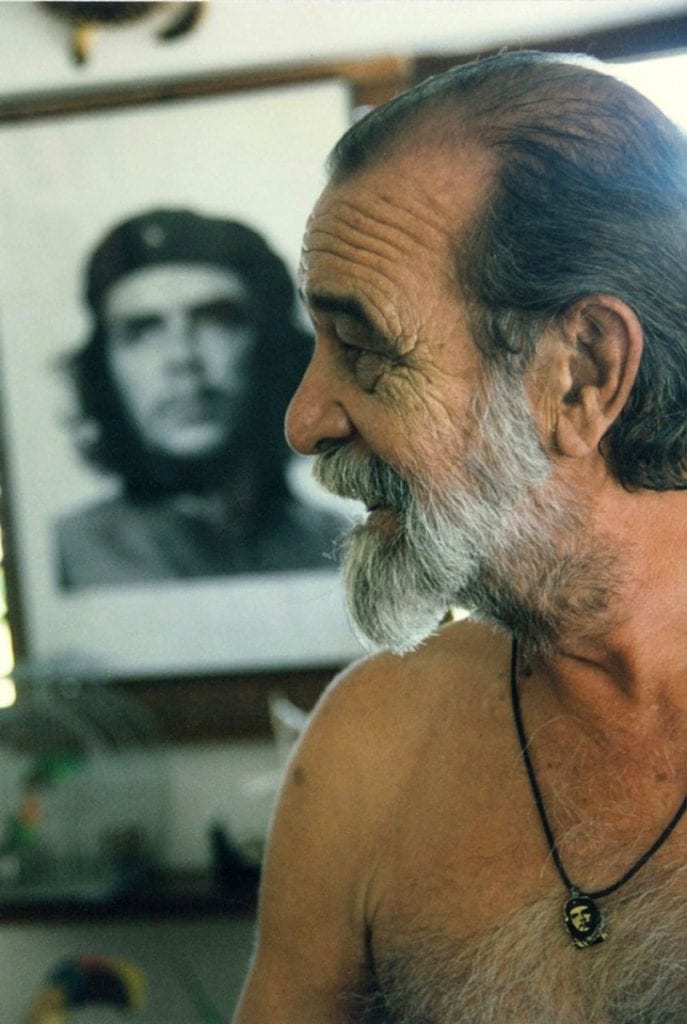
Cuba for Keeps
Being asked to choose 19 photos from my Cuba trips and write a narrative about them is both daunting and exciting. But how could one person’s story ever convey the empathy, love, and infatuation I feel toward Cuba?
I have been traveling to Cuba since 1996 and put together many shows of Cuban art in my hometown of Oxford, Mississippi, and in Tulsa, Oklahoma, where I went to graduate school. Currently, back in Mississippi, I collect for individual clients and my online gallery, millywestart.com, and show work to locals in my Garage Gallery.
The collection includes notable work from some well-known artists including photographers who documented the Revolution, internationally recognized poster makers, and painters. My numerous trips to Cuba have taken me to the homes of each and every artist whose work I sell. I have my own personal collection and of course along the way, in every province, town, and home, I took photos.
I’ll start at the beginning. Every year when I go to Cuba, I write to the Department of Treasury and send them my itinerary. I explain that I am a gallery owner and that I am seeking out work to keep my gallery going. Those folks are very busy, but have also been very good at getting my license to me just in time to get on the plane and go.
My first trip was in 1996 with The Center for Cuban Studies out of New York. I was never the same after that trip. I went from being a satisfied woman to a person alive and aware of what true happiness could be. In Cuba were a people who had almost nothing – houses devoid of clutter, and mostly empty pockets – yet were truly happy. When you look at the selection here, you will see that I have a few of portraits of just some of the artists who became my friends.
Upon every arrival in Havana I would go first to the home of photographer Alberto Korda, until his death in 2001. Almost everyone will know the image for which Korda is most well known, El Guerrillo Heroico. That iconic image of Che Guevara from 1960 is one of the most reproduced photos in the world – from posters to t-shirts, Che is everywhere, thanks to that one marvelous photograph.
On nearly every trip I went to the homes of three other photographers. Ernesto Fernandez and his wife Sonya would always welcome me with coffee, and it was there, talking with Sonya, that I learned a lot about Ernesto’s history and work. Perhaps he is best known for his images of the common people during the Revolution, and of young soldiers on the battlefields of Angola and at The Bay of Pigs, but perhaps his most famous image is one he took during the construction of the statue of José Martí in La Plaza de Revolución. In it, the large marble head of Martí is being kept from tipping over by huge timbers wedged into the eye sockets.
The art of Cuba is changing. The days of the living Revolution are over and a generation or two of new artists is on the scene. A couple of years ago, we had a really magical time at the home of Jose Fuster, ceramic artist and painter, the Picasso of Havana! On a hot summer afternoon near the end of a trip, he invited artists, writers, and filmmakers to his house west of Havana.
Hanging around his fascinating house with tile and ceramic structures everywhere, enjoying some interesting talk, were renowned journalist Marta Rojas, Ernesto Fernandez and Sonya, Cuba’s most well-known filmmaker Roberto Chile, Sandra Levinson, Director of the Center for Cuban Studies who was collecting work for a Fuster exhibit back in New York, and Mirta Ibara, actress and widow of the late film director, Tomás Gutiérrez Alea (Titon) who directed her in Fresca y Chocolate (Strawberry and Chocolate).
I arrived in Havana for the Bienal of 2012 just in time for the opening ceremony and went directly to the Gran Teatro home of The Cuban National Ballet which was the staging ground for Manuel Mendive’s performance piece. Based on his dream sequences, hundreds of models were painted with polka dots and dream-like figures then danced down the Prado toward the Malecon.
Many years ago, Sandra Levinson introduced me to husband and wife artists Alicia Leal and Juan Moreira. I went to their house again last year as they prepared their work for the Bienal – photos by Alicia and paintings by Juan. I took a photo of a table in their hallway. That photo of oranges in a big shell, a wooden sculpture and a ceramic plate is a visual reminder of the simple beauty I am drawn to in Cuba.
On another trip I went with Alicia and Juan to El Museo de Revolucion. There I was drawn to and photographed a gun, a Colt which was a relic from the early days of the Revolution. The simple background cut out of red cardboard is typical of the ingenuity used by curators to make things stand out. Now, in Old Havana, The Museum of the Revolution is almost literally overshadowed by the new additions to The National Museum of Fine Arts. Both Alicia and Juan have work in this fine collection. The last time I went to The Museum of the Revolution, the Colt was gone.
I have visited the home of José Figeroa, friend and protégé of Korda several times. He and his wife Cristina had turned their Vedado apartment into a gallery for the Bienal. One of the most fascinating works of art was a 27-minute film taken from the window of an airplane which was an actual documentation of the flight from Havana to Miami. The physical distance is so near, but the way there and back is anything but easy. I photographed Figeroa in 2010 and again last year with Cristina.
For many years I traveled to Santiago de Cuba on the south side of the island to visit the seven artists of El Grupo Bayate, a group of naïve painters who live and work around Mella. Back home in Mississippi, I sell the work of Southern self-taught artists, and I find this honest expression of story or memory appealing no matter where I find it. Luis Rodriguez is the best known of these artists and calls himself “El Estudiante,” “The Student” of his father and his grandfather who came to Mella from Sweden to farm in the early 20th century.
I continue to go to Santiago and stay there with the art historian Luisa Ramirez and her family. Her father Ignacio and her mother Mercedes welcome us with open arms and tears. It is quite moving to feel such emotion and tenderness. I hold on to that warmth as a reminder of the value of relationships. While I am there, I eat like royalty at a health retreat, vegetables so incredible and fresh that I hate leaving the dinner table.
Cuba is changing, at least on the surface, especially the big cities. In Santiago last year, I saw a group of French tourists that all looked alike. Women with their hair pulled back in tight buns or twisted neatly on the nape of their necks. It was almost an out-of-world experience for me because until now this type of traveler did not come to Cuba much. The rest of us are scruffy by comparison and expect to walk everywhere and sweat and we have learned to practice patience in all things. In Havana, it is the same. I find myself ill at ease these days by the rich people who congregate at the Hotel Nacional, who signal for a waiter with the flip of a hand while staring out over the ocean.
Just across from the Hotel Nacional is the apartment house where I stay. I met Dora in 1998 when I was on my third trip to Cuba. It was the best thing for my continuous travels that could have happened to me. The apartment overlooks the Malecon and the ocean. At that time her husband Mario was alive, but now her mother, “Big Dora” has moved in. The world is busy there and from the balcony we can look down on the swimming pool and tennis courts at the Hotel Nacional. I think how different my experience is from the people at the hotel. Mario used to roast our coffee beans every morning and knock on the door with a small tray in hand. “Milly. Coffee!” he would say. Dora tries to duplicate his coffee, but we both know it can’t be done.
It is rare that I have a day alone to just walk along the Malecon, but that opportunity came my way a couple of years ago. I had tried to meet up with Korda’s daughter Diana, but we couldn’t connect, so I just took off with my camera along the Malecon. It started raining as I was about halfway to Old Havana, too far to turn back and too stormy to keep walking. The sea water came over the wall and I crossed the street into one of the new cafés on the Malecon. The buildings are things you might have seen before, those wonderful specimens of architecture now painted in bright colors. It was on this day though that I photographed lovers on the Malecon and just a few minutes later tourists caught in the downpour. Outside the café, there was a small hairless dog wearing a t-shirt.
Later on, back at Dora’s, I walked into the lobby of her apartment building and took notice (not for the first time) of the very tall and beautiful marble statue of a nude woman which stands in the small rotunda which is the lobby. There are two small elevators in this lobby, but electricity is not trustworthy and in fact, after being stuck between floors for thirty minutes on my second day there last May, I used the winding stairs only until it was time to bring my suitcases down to go to the airport.
Over the course of 16 years and many trips to Cuba, hundreds of rolls of film and thousands of images taken with my digital camera, I have enough photos for more than one book. On my first trip I went to Guantanamo where I visited an elementary school. Students there constructed a simple and beautiful homage to José Martí, still revered in Cuba as the person who emphasized education for all and who dedicated his life to Cuba’s independence. There are many statues of Martí here in the United States, from Central Park to New Orleans, but the one in West New York, New Jersey has the inscription (translated) which gives insight to his philosophy and patriotism: “The Motherland is an altar, not a stepping stone.”
I want to express my sincere gratitude to Diana Díaz and the Estate of Alberto Korda, and to Roberto Salas. With great sadness, I dedicate my work presented here to a dear friend who passed away during the writing of this narrative. Oscar Mesa was the director of the UNEAC Gallery (Union of Writers and Artists of Cuba) in Santiago de Cuba. He was a victim of Hurricane Sandy, and those of us who knew him will miss him terribly.
– Milly West
Biography
Milly Moorhead West is a nationally recognized photographer whose works are in the collections of The Corcoran Gallery in Washington, D.C., The Ogden Museum of Southern Art, New Orleans, Louisiana, The Mississippi Museum of Art, Jackson, The Meridian Museum of Art, Meridian, Mississippi, The Brooks Gallery in Memphis, Tennessee, The Center for Southern Studies at the University of Mississippi, and many private and corporate collections.
West is a past recipient of the Mississippi Institute of Arts and Letters Award in Photography and former owner of Southside Gallery in Oxford. Her work was featured in the book and traveling exhibition Visualizing the Bluesedited and curated by Wendy McDaris.
After many years as an artistic photographer, West earned an MFA in photography at the University of Tulsa in Oklahoma. There she received the prestigious Gussman Award in Art and published numerous short stories and poems.
Since 1996, West has traveled to Cuba as a collector and art dealer, and her photos from those travels have been featured in a number of galleries including Southside Gallery in Oxford (under new ownership), The Meridian Museum of Art, The Center for Cuban Studies, New York, The University of Tulsa, and May Rooms Gallery, Tulsa.
During the 2000 Bienal in Havana, West’s Southern work was featured in a one-person exhibit at the Ambos Mundos Hotel in Old Havana. The poet laureate of Cuba, Pablo Armando Fernandez read a poem he wrote for the exhibit. Photographers Alberto Korda, Roberto Salas, and Ernesto Fernandez were among the artists and friends in attendance.
West’s recent work examines the things we (Southerners) neglect, especially as we age. She shows us things we once cherished which are no longer cared for or valued.
West is an adjunct professor of Writing at the Center for Writing and Rhetoric at the University of Mississippi. She writes a regular monthly editorial for The Oxford Eagle on Environmental matters.
Jerry Atnip
Jerry Atnip has a 38-year career as a commercial and fine art photographer. His images have been published in 40 countries, and since 2003, he’s held over 75 exhibitions and been presented with over 90 awards. He is also a teacher, workshop director, curator, juror, frequent lecturer and serves on the boards of several Arts &
Photography organizations, including Atlanta Celebrates Photography festival and Slow Exposures Photofestival. His work has been collected by museums, corporate and private collectors and he is an Exhibiting Member of The National Arts Club in New York.


